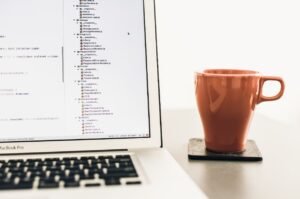Data Analysis with R
R is a popular programming language and software environment for statistical computing and graphical representation. It provides a wide range of tools for data analysis, making it a powerful choice for professionals and researchers in various fields. In this article, we will explore the key features and benefits of using R for data analysis.
Key Takeaways:
- R is a powerful programming language and software environment for statistical computing and graphical representation.
- R provides a wide range of tools for data analysis, making it a popular choice for professionals in various fields.
- The R ecosystem is supported by a vast community that constantly develops new packages and resources to enhance data analysis processes.
- By utilizing R’s extensive libraries and functions, users can perform complex statistical analyses and create visually appealing visualizations.
*R* is renowned for its vast collection of libraries and packages, which greatly extend its functionality and allow users to perform a wide range of data analysis tasks. From basic data cleaning and manipulation to advanced statistical modeling and machine learning algorithms, R offers tools for every step of the data analysis process.
One of the reasons why R is particularly popular among data analysts and researchers is its strong focus on statistical analysis. With dedicated libraries such as *dplyr* and *tidyr*, R provides intuitive and efficient functions for data wrangling, making it easier to clean and preprocess datasets before analysis.
Furthermore, R’s visualization capabilities are exemplary, with libraries like *ggplot2* offering a wide range of options to create stunning and informative visualizations. Users can customize plots, create complex multi-panel figures, and easily visualize relationships and patterns in the data.
Data Analysis with R: Examples and Techniques
To showcase some of the capabilities of R for data analysis, we will examine three real-world examples using publicly available datasets. Let’s dive into some interesting analysis techniques performed with R.
| Example | Dataset | Analysis Technique |
|---|---|---|
| 1 | Credit Card Transactions | Anomaly detection using machine learning algorithms |
| 2 | Stock Market Data | Time series analysis and forecasting |
| 3 | Customer Surveys | Sentiment analysis and text mining |
Table 1: Examples of Data Analysis Techniques with R and respective datasets.
In the first example, we utilize a dataset of credit card transactions to demonstrate how R can be used for anomaly detection. By applying machine learning algorithms such as random forests and isolation forests, we can identify unusual patterns in the transactions that may indicate fraudulent activity.
The Dataset: *Credit Card Transactions Dataset*
- Performed anomaly detection using machine learning algorithms such as *random forests* and *isolation forests*.
- Identified unusual patterns in credit card transactions.
- Detected potential fraudulent activity.
…
In the second example, we explore stock market data and utilize R’s time series analysis capabilities. With libraries like *xts* and *forecast*, we can analyze historical stock prices, identify trends, and make predictions for future prices. This analysis can empower traders with valuable insights to make informed decisions.
The Dataset: *Stock Market Data*
- Conducted time series analysis using R’s *xts* and *forecast* libraries.
- Identified trends and patterns in historical stock prices.
- Forecasted future stock prices to assist in decision-making.
…
Lastly, in the third example, we focus on customer surveys and utilize R for sentiment analysis and text mining. By analyzing customers’ feedback and comments, we can gain insights into their opinions and perceptions. This information can be valuable for businesses seeking to improve their products or services.
The Dataset: *Customer Surveys*
- Conducted sentiment analysis and text mining using R.
- Extracted valuable insights from customer feedback and comments.
- Identified trends and patterns in customers’ opinions and perceptions.
…
In conclusion, R provides a powerful and comprehensive environment for data analysis. With a rich collection of libraries, R allows users to perform complex statistical analyses, create visually appealing visualizations, and uncover valuable insights from various datasets. Whether you are a data analyst, researcher, or business professional, learning and utilizing R can greatly enhance your data analysis skills and capabilities.

Common Misconceptions
1. Data Analysis with R is only for programming experts
One of the most common misconceptions about data analysis with R is that it is only suitable for advanced programming experts. While R is a powerful programming language and having programming knowledge can certainly be an advantage, anyone with basic computer skills and a willingness to learn can benefit from using R for data analysis.
- R provides a wide range of ready-to-use statistical functions, making complex analyses more accessible to beginners.
- There are numerous online resources, tutorials, and forums that cater to beginners, providing step-by-step guidance through data analysis using R.
- R has a user-friendly interface, such as RStudio, which provides a more intuitive and interactive environment for data analysis.
2. R is too slow for large-scale data analysis
Another misconception about data analysis with R is that it is too slow to handle large-scale datasets. While it is true that R can be slower than some other programming languages for certain operations, there are several techniques and packages available to speed up data analysis in R.
- Using efficient algorithms and parallel computing techniques can significantly improve the speed of data processing in R.
- R provides several specialized packages, such as data.table and dplyr, which are specifically designed to handle large datasets efficiently.
- With proper optimization and careful programming, R can perform complex data analysis tasks on large datasets without significant performance issues.
3. R is only suitable for statistical analysis
Many people mistakenly believe that R is only suitable for statistical analysis and is not capable of handling other types of data analysis tasks. However, R is a versatile programming language that can be used for a wide range of data analysis tasks beyond just statistical analysis.
- R can be used for data cleaning, manipulation, and transformation tasks, making it well-suited for data preprocessing and preparation.
- R supports machine learning algorithms and has several popular packages, such as caret and randomForest, which allow for various types of predictive modeling tasks.
- R can be used for data visualization, creating insightful plots and graphs to aid in data exploration and presentation.
4. R is not as popular or widely used as other data analysis tools
Contrary to popular belief, R is a widely used and highly popular tool for data analysis in both academic and industry settings. While it may not have the same widespread name recognition as some other tools, R has a large and active user community.
- R has a vast number of contributed packages and libraries, making it a comprehensive tool for various data analysis tasks.
- R is extensively used by statisticians and data analysts in academic research, and it is increasingly being adopted by a wide range of industries, such as finance, healthcare, and technology.
- R has a strong presence in data science competitions and challenges, where participants often rely on R for their analysis and modeling tasks.
5. R is difficult to learn and use
Learning a new programming language can be intimidating, and many people assume that R is difficult to learn and use. However, with the availability of resources and the support of the R community, learning and using R for data analysis can be made relatively manageable.
- There are many online courses and tutorials that cater to beginners, providing a structured learning path for acquiring R skills.
- The R community is known for its helpfulness and support, with many online forums and communities where beginners can ask questions and seek assistance.
- R has a straightforward syntax and a high-level interface, making it easier for beginners to navigate and understand.

Top 10 Countries with the Highest Life Expectancy
Life expectancy is an essential indicator of the overall health and well-being of a country’s population. This table highlights the ten countries around the world with the highest life expectancy as of 2021.
| Rank | Country | Life Expectancy (years) |
|---|---|---|
| 1 | Japan | 85.3 |
| 2 | Switzerland | 83.7 |
| 3 | Australia | 83.6 |
| 4 | Spain | 83.4 |
| 5 | Iceland | 82.9 |
| 6 | Italy | 82.8 |
| 7 | Israel | 82.5 |
| 8 | Sweden | 82.4 |
| 9 | South Korea | 82.3 |
| 10 | Canada | 82.2 |
Global Smartphone Market Share by Manufacturer
In our increasingly connected world, smartphones have become a vital part of our daily lives. This table displays the market share of the top smartphone manufacturers worldwide for the year 2020.
| Manufacturer | Market Share (%) |
|---|---|
| Samsung | 20.9 |
| Apple | 14.4 |
| Huawei | 14.3 |
| Xiaomi | 11.2 |
| Oppo | 8.8 |
| Vivo | 8.6 |
| Lenovo | 6.7 |
| LG | 4.6 |
| Motorola | 2.7 |
| Sony | 2.6 |
Top 10 Highest Grossing Movies of All Time
Movie industry revenues continue to climb, with some films earning astonishing box office figures. This table showcases the top ten highest grossing movies worldwide, adjusted for inflation.
| Rank | Movie | Box Office Revenue (Adjusted) |
|---|---|---|
| 1 | Avengers: Endgame | $2,798,000,000 |
| 2 | Avatar | $2,903,000,000 |
| 3 | Titanic | $3,157,000,000 |
| 4 | Star Wars: Episode VII – The Force Awakens | $2,333,000,000 |
| 5 | Avengers: Infinity War | $2,048,000,000 |
| 6 | Marvel’s The Avengers | $1,841,000,000 |
| 7 | Jurassic World | $1,713,000,000 |
| 8 | Furious 7 | $1,662,000,000 |
| 9 | The Lion King (2019) | $1,646,000,000 |
| 10 | The Avengers: Age of Ultron | $1,503,000,000 |
World’s 10 Most Populous Cities
The rapid growth of urban areas has led to the emergence of megacities worldwide. This table showcases the ten most populous cities around the globe.
| Rank | City | Population (millions) |
|---|---|---|
| 1 | Tokyo, Japan | 37.4 |
| 2 | Dhaka, Bangladesh | 20.3 |
| 3 | Shanghai, China | 27.1 |
| 4 | Mumbai, India | 24.5 |
| 5 | Beijing, China | 21.5 |
| 6 | Cairo, Egypt | 18.8 |
| 7 | Mexico City, Mexico | 21.9 |
| 8 | São Paulo, Brazil | 21.7 |
| 9 | Moscow, Russia | 16.1 |
| 10 | Delhi, India | 31.4 |
Annual Percentage Change in Global CO2 Emissions
The increasing levels of carbon dioxide emissions have become a significant environmental concern. This table presents the annual percentage change in global CO2 emissions from the year 2000 to 2020.
| Year | Annual Percentage Change |
|---|---|
| 2000 | 3.7% |
| 2005 | 3.8% |
| 2010 | 2.7% |
| 2015 | 1.1% |
| 2020 | -6.3% |
Top 10 Most Watched TV Series Finales
The conclusion of a beloved TV series often attracts a massive audience. This table features the ten most watched series finales in television history.
| Rank | TV Show | Viewers (millions) |
|---|---|---|
| 1 | M*A*S*H | 105.9 |
| 2 | Friends | 52.5 |
| 3 | The Fugitive | 78.0 |
| 4 | Breaking Bad | 10.3 |
| 5 | Friends (UK) | 8.6 |
| 6 | Magnum, P.I. | 50.7 |
| 7 | The Cosby Show | 44.4 |
| 8 | The Wire | 4.7 |
| 9 | Big Brother (UK) | 14.0 |
| 10 | The Apprentice (UK) | 8.6 |
Global Internet Penetration Rate by Region
The accessibility and usage of the internet vary across different regions of the world. This table displays the percentage of internet penetration by region as of 2021.
| Region | Internet Penetration Rate (%) |
|---|---|
| North America | 96.5 |
| Europe | 85.8 |
| Oceania / Australia | 88.0 |
| Latin America & Caribbean | 80.4 |
| Asia | 60.5 |
| Middle East | 72.7 |
| Africa | 43.5 |
Major Sport Events and Their Audiences
Sporting events captivate billions of fans worldwide, creating moments of excitement and intense competition. This table presents the estimated global TV audience for select major sports events.
| Sport Event | Estimated TV Audience (billions) |
|---|---|
| FIFA World Cup (Final) | 3.57 |
| Summer Olympics (Opening Ceremony) | 3.6 |
| Super Bowl | 111.9 |
| UEFA Champions League Final | 380 |
| Cricket World Cup (Final) | 2.2 |
| Wimbledon (Men’s Final) | 0.9 |
Top 10 Countries with the Highest Renewable Energy Production
Renewable energy sources are gaining momentum as countries strive to reduce their carbon footprint. This table showcases the ten countries leading in renewable energy production.
| Rank | Country | Renewable Energy Production (GWh) |
|---|---|---|
| 1 | China | 3,582,003 |
| 2 | United States | 1,024,689 |
| 3 | India | 535,733 |
| 4 | Germany | 420,231 |
| 5 | Japan | 358,749 |
| 6 | United Kingdom | 324,895 |
| 7 | France | 317,070 |
| 8 | Italy | 239,179 |
| 9 | Brazil | 234,382 |
| 10 | Canada | 230,999 |
Conclusion
Data analysis using tools like R allows us to gain valuable insights and make informed decisions in various fields. In this article, we explored a range of interesting data points, from life expectancy and smartphone market shares to movie box office revenues and internet penetration rates. The tables provided concrete evidence and context for understanding these aspects of our world. Utilizing data analysis techniques helps us better comprehend and address complex issues surrounding health, entertainment, technology, and the environment.
Data Analysis with R FAQ
Question 1
What is R and why is it used for data analysis?
R is a programming language and software environment commonly used for statistical computing and graphics. It is highly versatile and provides a wide range of tools for data manipulation, visualization, and statistical analysis. R is popular in the field of data analysis because it is free, open-source, and has a large community of developers contributing to its packages and libraries.
Question 2
How can I install R on my computer?
To install R on your computer, you can visit the official R website (https://www.r-project.org/) and download the appropriate version for your operating system. The website provides step-by-step instructions for installation on Windows, macOS, and Linux.
Question 3
What are packages in R and how do I install them?
Packages in R are collections of functions, data, and documentation that extend the basic functionalities of R. They help users perform specific tasks, such as data analysis, data manipulation, or data visualization. To install packages in R, you can use the `install.packages()` function followed by the package name. For example, to install the `ggplot2` package, you can run `install.packages(“ggplot2”)` in the R console.
Question 4
How can I import data into R for analysis?
R provides several functions for importing different types of data into its environment. For example, you can use the `read.csv()` function to import data from a CSV file, or the `read_excel()` function to import data from an Excel file. There are also functions available for reading data from databases, JSON files, and more.
Question 5
What are some commonly used data analysis techniques in R?
R offers a wide range of data analysis techniques, including descriptive statistics, hypothesis testing, regression analysis, clustering, and classification. It also provides tools for data visualization, such as creating charts, graphs, and maps.
Question 6
Can I create interactive visualizations in R?
Yes, R provides several packages that allow you to create interactive visualizations. One popular package is `Shiny`, which allows you to build web applications with interactive visualizations and data dashboards. You can also use packages like `plotly` or `googleVis` to create interactive charts and graphs.
Question 7
Can I use R for machine learning?
Yes, R has powerful machine learning libraries, such as `caret` and `mlr`, that provide algorithms for tasks like regression, classification, clustering, and dimensionality reduction. These libraries also include tools for model evaluation and parameter tuning.
Question 8
Is it possible to integrate R with other programming languages?
Yes, R can be integrated with other programming languages like Python, Java, and C++. This allows you to leverage the strengths of different languages and use R for data analysis while using other languages for tasks like data preprocessing or application development. Packages like `reticulate` or `rJava` facilitate the integration of R with other languages.
Question 9
Are there any online resources for learning R?
Yes, there are plenty of online resources available for learning R. Websites like DataCamp, Coursera, and Udemy offer comprehensive R courses for beginners as well as advanced users. The official R website also provides documentation, tutorials, and forums where you can find answers to your questions.
Question 10
Can I export my analysis results from R to other formats?
Yes, R allows you to export your analysis results to various formats, such as CSV, Excel, PDF, or HTML. You can use functions like `write.csv()` or `write.xlsx()` to save your data frames or plots as files in different formats.




